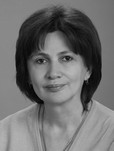Патофизиологические особенности миокардита у спортсменов
Фотографии:
ˑ:
Кандидат медицинских наук Л.А. Симонян
Государственный социально-гуманитарный университет, Коломна, Московская область
Миокардит является неишемическим воспалительным заболеванием сердечной мышцы, которое может привести к дисфункции сердца и аритмии. Этиология миокардита неоднозначна, но среди причин развития можно выделить инфекционные, токсические и аутоиммунные поражения. При патофизиологическом исследовании в первую очередь выявляются воспалительные инфильтраты миокарда и некроз. Целью исследования стало теоретическое обоснование патофизиологических особенностей миокардита у спортсменов, в т.ч. как причины внезапной сердечной смерти. Автором делается вывод о том, что миокардит служит фактором риска развития SCD, особенно у молодых людей. Физические нагрузки приводят к увеличению частоты SCD у пациентов с миокардитом. Это особенно важно для спортсменов, у которых физические нагрузки во время тренировочного и соревновательного этапов являются основным компонентом их спортивной деятельности.
Ключевые слова: миокардит, патофизиологические особенности, спортсмены, сердце, физическая нагрузка.
References
- Basso C., Carturan E., Corrado D., Thiene G. Myocarditis and dilated cardiomyopathy in athletes: diagnosis, management, and recommendations for sport activity. Cardiol Clin 2007;25:423-9.
- Cooper L.T., Keren A., Silwa K., Matsumori A., Mensah G.A. The global burden of myocarditis: part 1: a systematic literature review for the Global Burden of Diseases, Injuries, and Risk Factors 2010 study. Glob Heart 2014;9:121-9.
- Drory Y., Turetz Y., Hiss Y, et al. Sudden unexpected death in persons less than 40 years of age. Am J Cardiol 1991;68:1388-92.
- Friman G., Wesslen L. Special feature for the Olympics: effects of exercise on the immune system: infections and exercise in high-performance athletes. Immunol Cell Biol 2000;78:510-22.
- Gatmaitan B.G., Chason J.L., Lerner A.M. Augmentation of the virulence of murine coxsackie-virus B-3 myocardiopathy by exercise. J Exp Med 1970;131:1121-36.
- Hosenpud J.D., Campbell S.M., Niles N.R., Lee J., Mendelson D., Hart M.V. Exercise induced augmentation of cellular and humoral autoimmunity associated with increased cardiac dilation in experimental autoimmune myocarditis. Cardiovasc Res 1987;21:217-22.
- Karjalainen J. Clinical diagnosis of myocarditis and dilated cardiomyopathy.S cand J Infect Dis Suppl1 993;88:33-43.
- Larsson E., Wesslen L., Lindquist O., et al. Sudden unexpected cardiac deaths among young Swedish orienteers-morphological changes in hearts and other organs. APMIS 1999;107:322-36.
- Maron B.J. Sudden death in young athletes. Lessons from the Hank Gathers affair. N Engl J Med 1993;329:55-7.
- Maron B.J., Zipes D.P., Kovacs R.J. Eligibility and disqualification recommendations for competitive athletes with cardiovascular abnormalities: preamble, principles, and general considerations: a scientific statement from the American Heart Association and American College of Cardiology. J Am Coll Cardiol 2015;66:2343-9.
- Quaranta F., Guerra Е., Sperandii F., et al. Myocarditis in athlete and myocardial bridge: An innocent bystander? World J Cardiol. V.7(5) 2015.
- Trachtenberg B.H., Hare J.M. Inflammatory cardiomyopathic syndromes. Circ Res 2017;121:803-18.
- Vikerfors T., Stjerna A., Olcen P., Malmcrona R., Magnius L. Acute myocarditis. Serologic diagnosis, clinical findings and follow-up. Acta Med Scand 1988;223:45-52.
- Woodruff J.F. Viral myocarditis. A review. Am J Pathol 1980;101:423-84.



